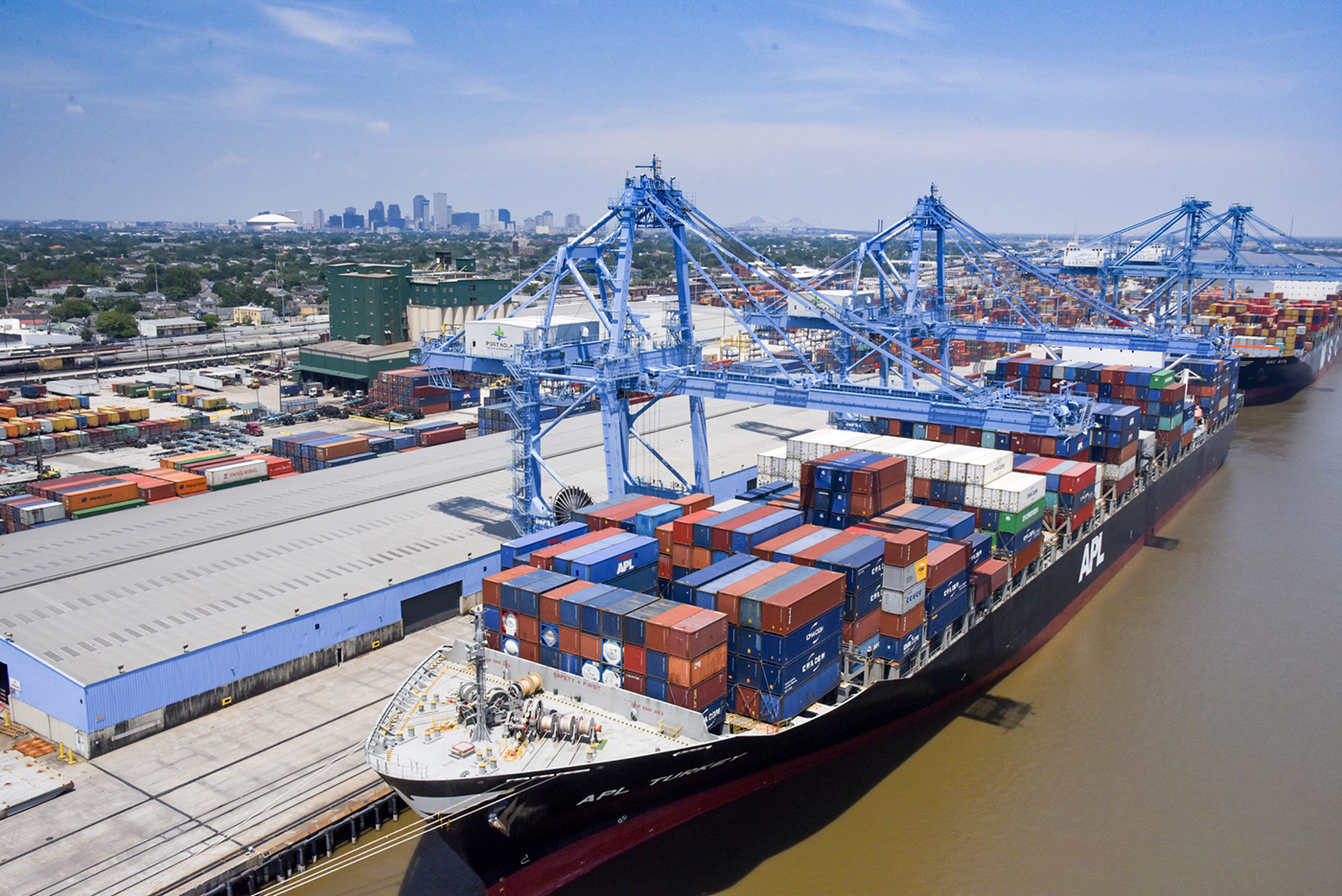In the early 2000s, the Port of New Orleans (Port NOLA) made a move into the container-handling business when it converted one of its break bulk terminals to a new container terminal. In 2004, the Napoleon Avenue Container Terminal opened to ships with drafts up to 45 feet.
But to connect vessels in the ship channel to the berths at Napoleon and another wharf at the port’s Nashville Avenue Terminal, the access channel had to be deepened from 35 feet. At the time, the U.S. Army Corps of Engineers (USACE) maintained the Port of New Orleans access channel to just 35 feet, as authorized by the River and Harbors Act of 1938. Subsequent ship channel deepening authorizations in the 1980s never addressed the port’s access channel.
The port forged ahead and deepened the approach channel as part of the initial construction of the Napoleon Avenue Container Terminal in 2003 and has been responsible for maintaining it to 45 feet (plus 2 feet for advanced maintenance) ever since.
In the 20 years since then, port officials have worked with Louisiana’s federal delegation to have Congress authorize the Corps to ultimately bear the responsibility for maintaining the access channel to the same depth as the ship channel.
“For that to happen literally took an act of Congress,” said Matt Gresham, chief of governmental relations for Port NOLA.
That act of Congress came in the 2016 Water Resources Development Act, which directed the Corps to study the feasibility of deepening the channel approach on the left descending bank of the Mississippi River between Mile 98.3 and Mile 100.6 above Head of Passes “to a depth equal to the channel,” now authorized to 50 feet.
After studying several alternatives, the Corps found a benefit-cost ratio of 49.0 for deepening the approach channel to 50 feet, with estimated total average annual benefits to the nation of $35.8 million and the average annual cost estimated at $731,393. The 50-foot access channel will extend from Mile 99.6 to Mile 100.3. The Chief’s Report for the project was signed in January 2022.
The board of commissioners of the Port of New Orleans voted to approve the cost share agreement between the Department of the Army and the port, the non-federal sponsor for the project, during its September 26 meeting. The Corps estimates the initial construction cost to be about $9.8 million. The port will shoulder 35 percent of that initial cost, with an in-kind dredging contribution to equal 25 percent and 10 percent of the cost to be paid over a 30-year period.
“USACE will annually maintain the approach channels to the authorized depths,” said Melanie Oubre with the New Orleans District’s public affairs office. “The port will typically maintenance-dredge the berthing areas after USACE maintenance dredging is completed and as required throughout the year based on shoaling conditions adjacent to the wharves.”
Oubre said officials with the New Orleans District expect to dredge about 414,000 cubic yards of material to bring the access channel from 47 feet to 50 feet (plus about 4 feet for advanced maintenance).
Following the commissioners’ vote to approve the cost share agreement, Port NOLA President and CEO Brandy Christian praised the benefits of the project for maintaining the port’s competitive standing with other global ports.
“There’s no question this project is one more significant infrastructure investment that will solidify Louisiana’s position as the premier gateway for global trade,” Christian said. “We thank our federal partners and our federal delegation for their tireless work on this project. With flood protection and deeper draft, we will continue to welcome bigger ships, more cargo and resilient facilities for decades to come.”
Also during the September 26 meeting, Port NOLA’s board of commissioners approved several other measures connect to the port’s planned container terminal to be located in Violet, La., in St. Bernard Parish. The board authorized Christian to enter into an agreement with the Louisiana Department of Transportation and Development (DOTD) for the engineering, design, construction, maintenance and relocation of a stretch of Louisiana Highway 46, or East St. Bernard Highway. To accommodate the planned Louisiana International Terminal (LIT) and rail service to the facility, a portion of St. Bernard Highway will have to be moved about 400 feet. After initial construction, Louisiana DOTD would assume all future maintenance.
Prior to voting on the measure, Walter Leger Jr., vice chairman of the board, commented that the most recent proposed location and design of St. Bernard Highway is an update to the original design, which keeps the highway closer to its current location while still allowing the terminal to operate efficiently. That change, he said, was in direct response to input from the community.
Caption for photo: Napoleon Avenue Container Terminal. (Photo courtesy of Port NOLA)




